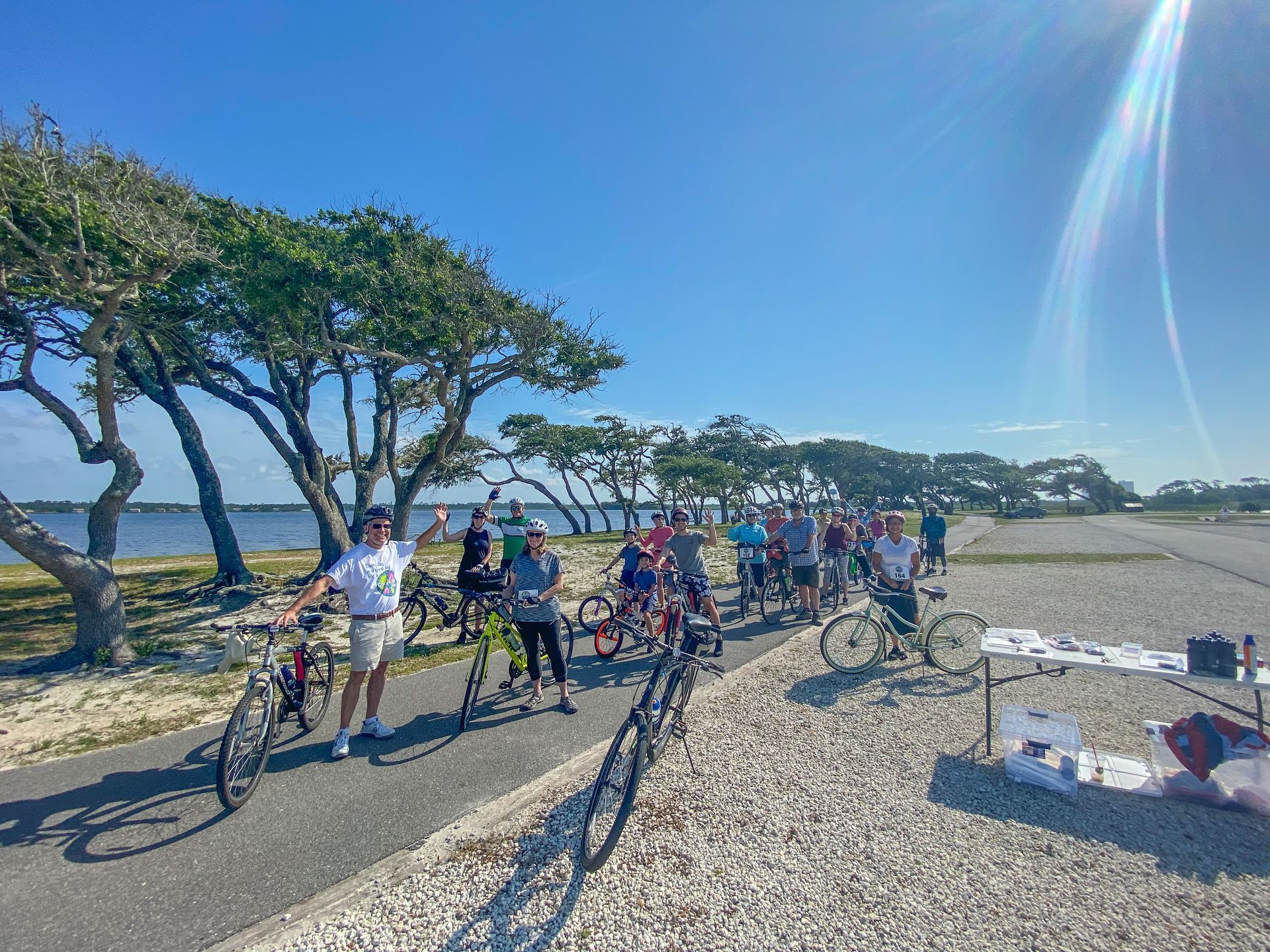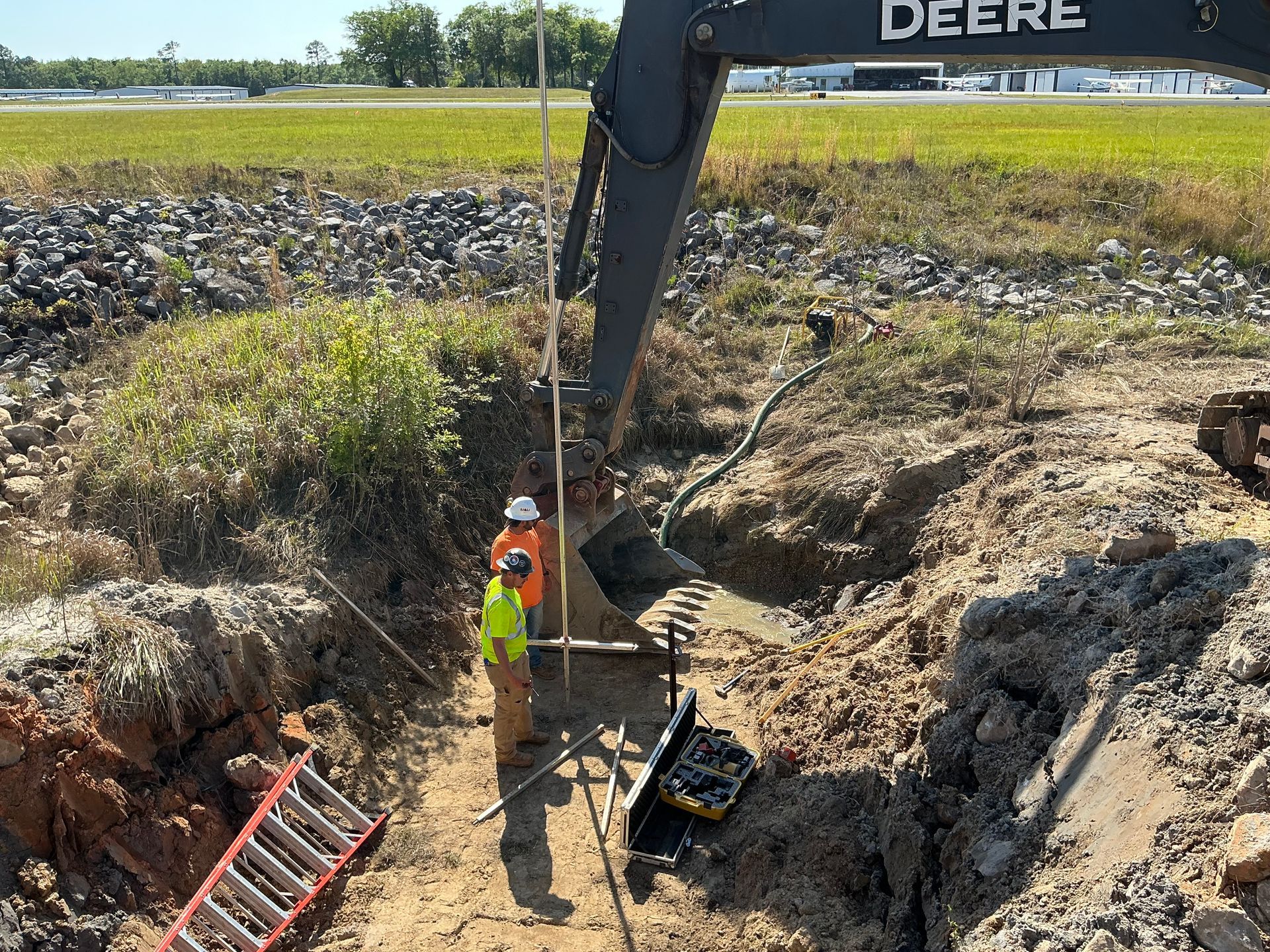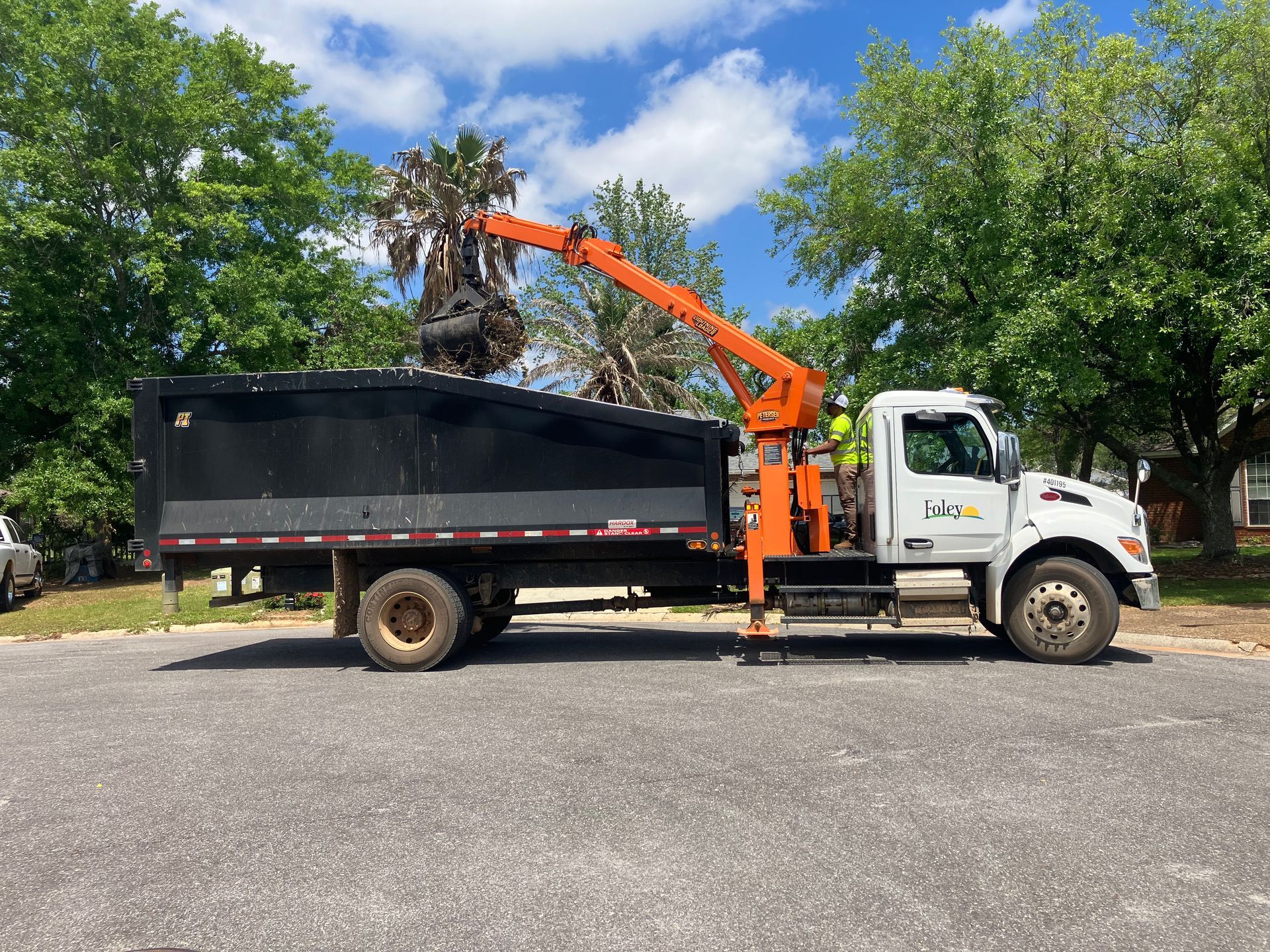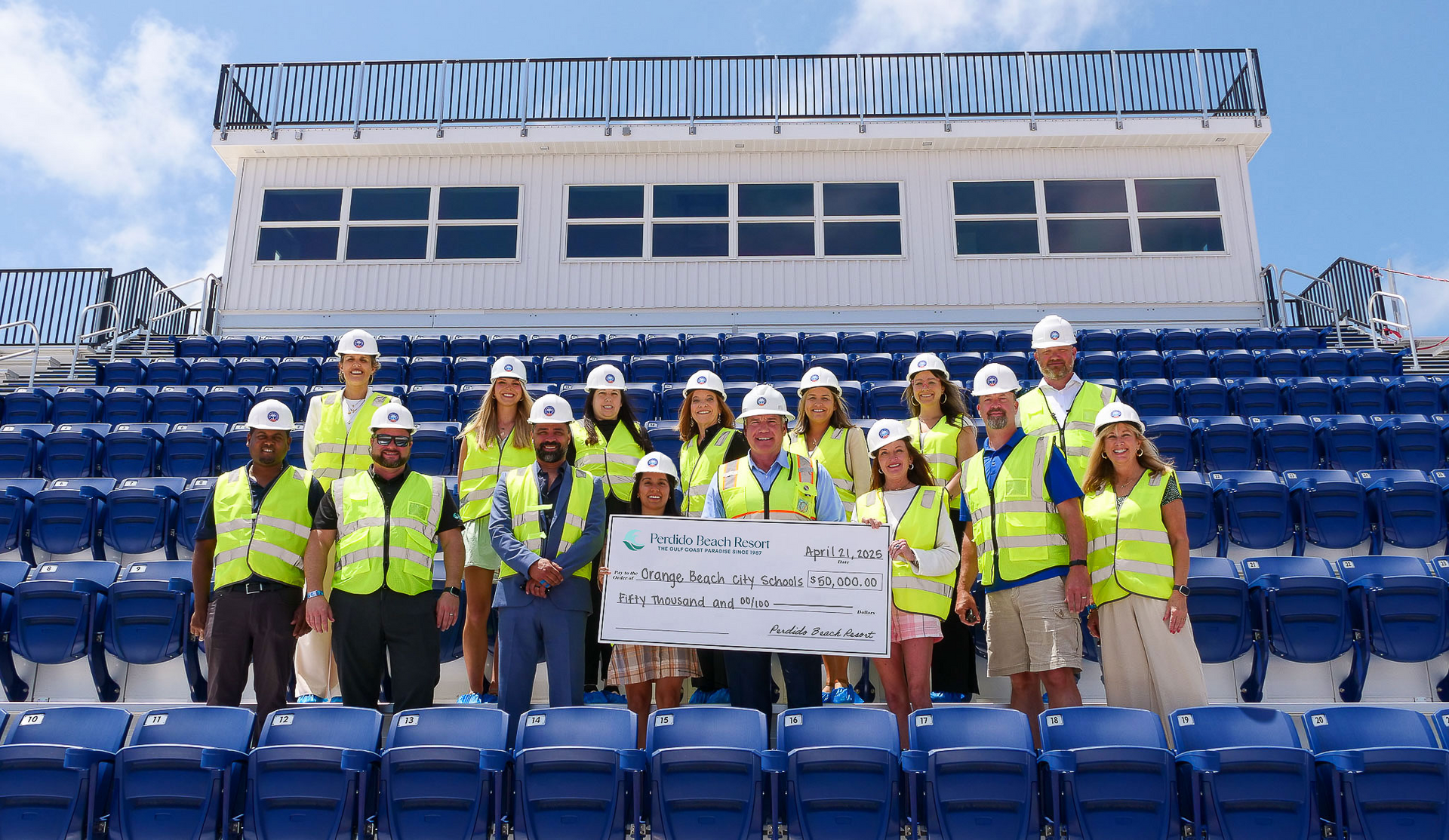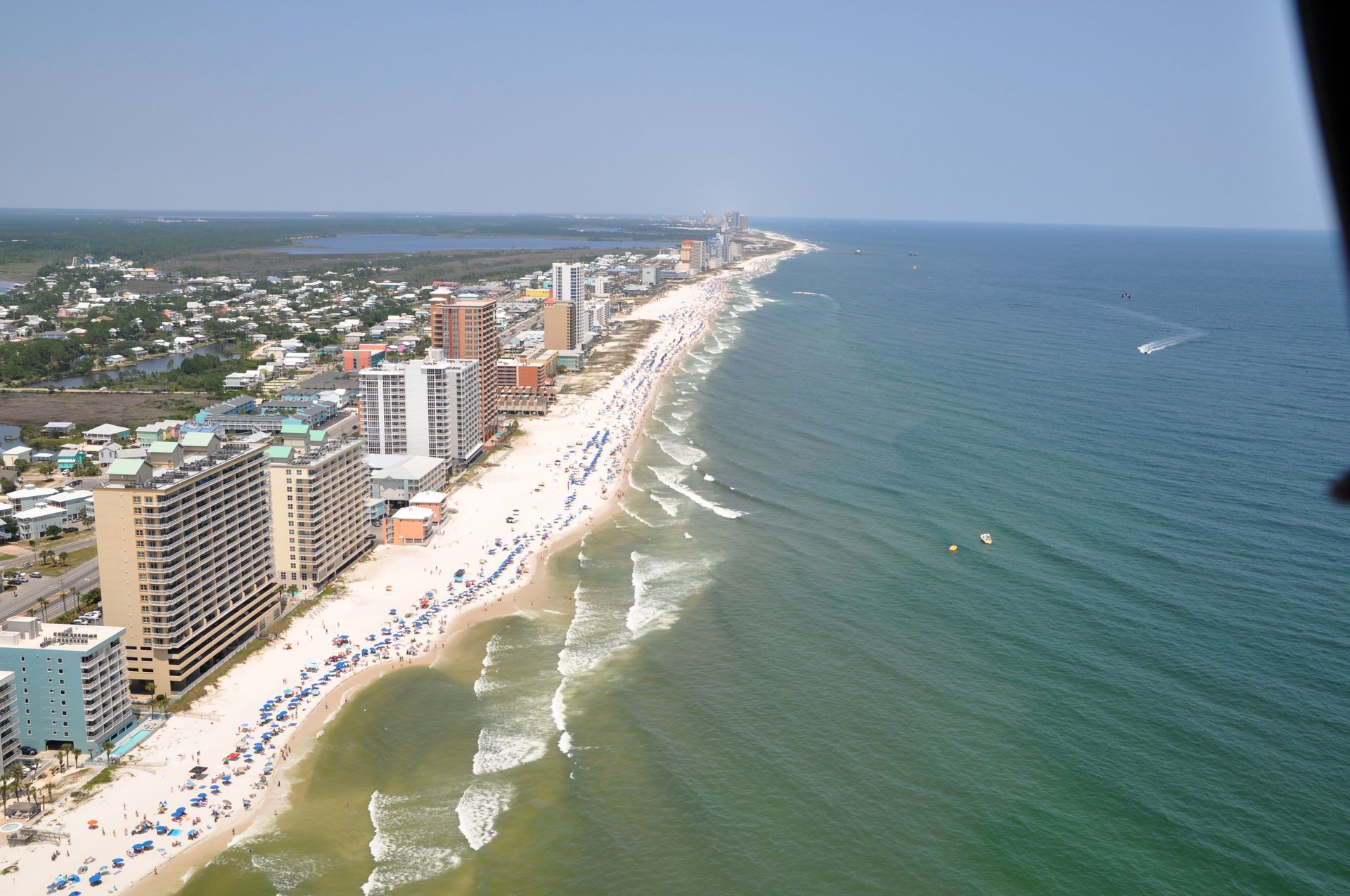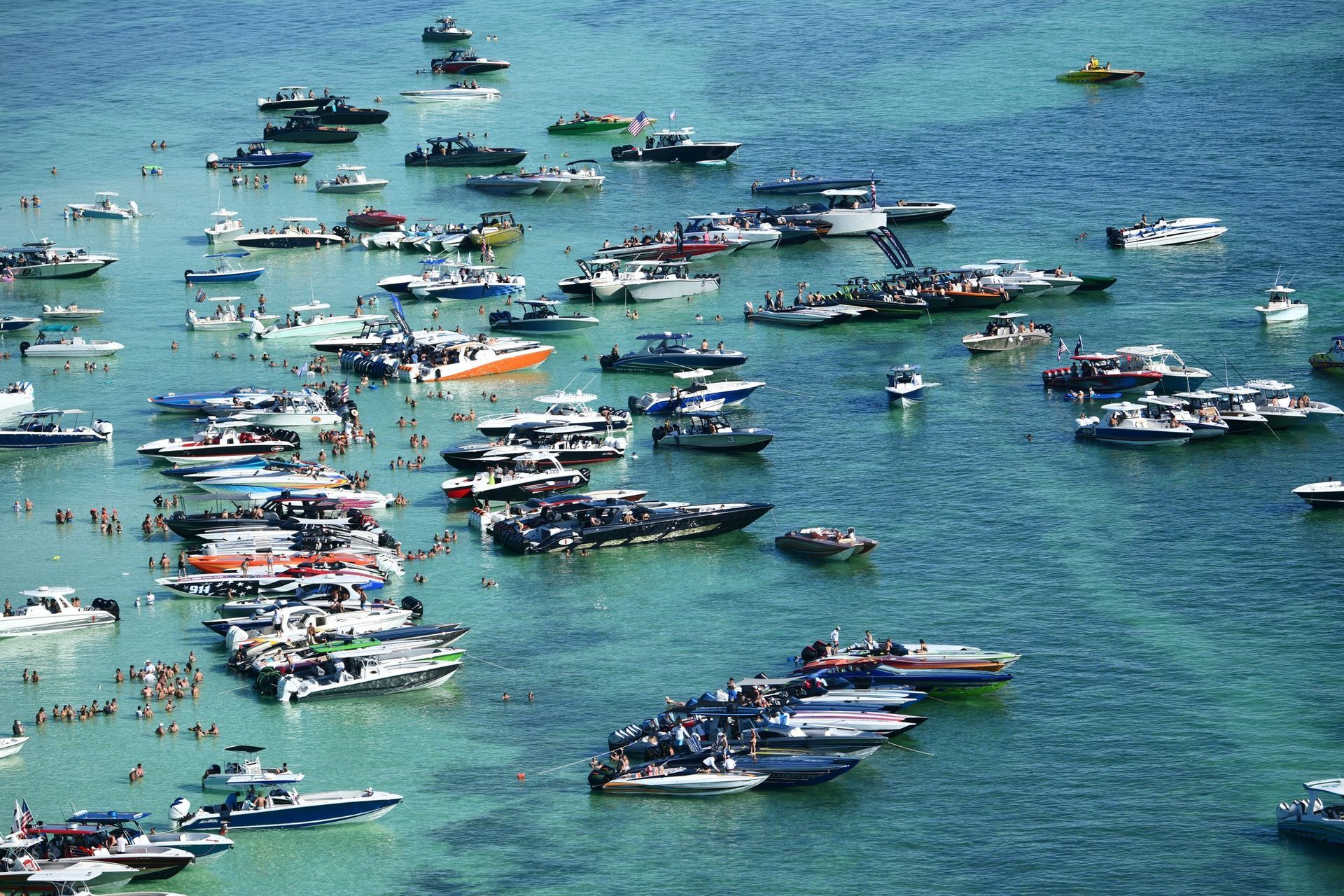18 Named Storms Make 2024 Hurricane Season One for the Books
Orange Beach Area Dodges Direct Impacts But Feels the Gulf's Rough Surf Conditions
Orange Beach, Ala. – (OBA) – Today marks the end of the 2024 Atlantic hurricane season. This season is ending with an above average level of tropical activity, marked by some record-breaking storms and rainfall. According to data from NOAA, the Atlantic basin saw 18 named storms, 11 of which became hurricanes, and five intensified into major hurricanes. This season stood out not only for its intensity but also for its impacts on various regions of the United States, particularly the Gulf Coast and North Carolina, while the Orange Beach Area was very fortunate and avoided any direct hits.
A Season of Intensity and Milestones
The 2024 season was above average in terms of storm activity, with five hurricanes making U.S. landfall. Notably, two of these were major hurricanes. Following a lull during the peak season, activity surged post-September, breaking records with seven hurricanes forming after September 25.
The most significant storm was Hurricane Beryl, which set a record as the earliest Category 5 hurricane ever recorded in the Atlantic basin. Beryl weakened to a Category 1 storm upon landfall near Matagorda, Texas, but still caused substantial storm surge flooding across parts of Texas and Louisiana.
Hurricane Helene was the deadliest storm of the season, making landfall as a Category 4 hurricane along the Big Bend area of the Florida Gulf Coast. Helene caused catastrophic flooding in western North Carolina, with rainfall levels exceeding the one-in-1,000-year recurrence interval in some areas. Its far-reaching impacts included widespread wind damage and storm surge from Florida to the Carolinas, with over 150 fatalities reported, making it the deadliest storm since Hurricane Katrina in 2005.
Hurricane Milton, a Category 3 storm, devastated Florida’s west coast with a destructive storm surge and an outbreak of 46 tornadoes, several of which were rated EF-2 or stronger. Milton also experienced one of the most rapid intensifications ever observed, with wind speeds increasing by 90 mph in just 24 hours. This storm caused extensive flooding in Florida and highlighted the effectiveness of NOAA’s forecasting advancements, as warnings were issued days before the storm intensified.
Hurricane Debby and Hurricane Francine, both Category 1 storms, also made landfall, though their impacts were less severe compared to Helene and Milton. Francine, in particular, contributed to rough seas that were felt along the Gulf Coast, including Orange Beach.
Local Impacts in Orange Beach
While Orange Beach and its surrounding areas were spared direct impacts from any hurricanes this year, the Gulf Coast experienced rough seas and elevated surf conditions as a result of storms like Helene, Milton, and Francine.
NOAA’s Role in Advancing Hurricane Science
The 2024 season showcased NOAA’s improvements in hurricane prediction and monitoring. Using advanced systems such as the Hurricane Analysis and Forecast System, NOAA delivered its most accurate track forecasts to date. Hurricane Hunter aircraft flew 392 mission hours, deploying over 1,200 scientific instruments to collect critical atmospheric data. These efforts were complemented by ocean monitoring technologies, including gliders and sail drones, which provided valuable data on ocean conditions ahead of land falling storms.
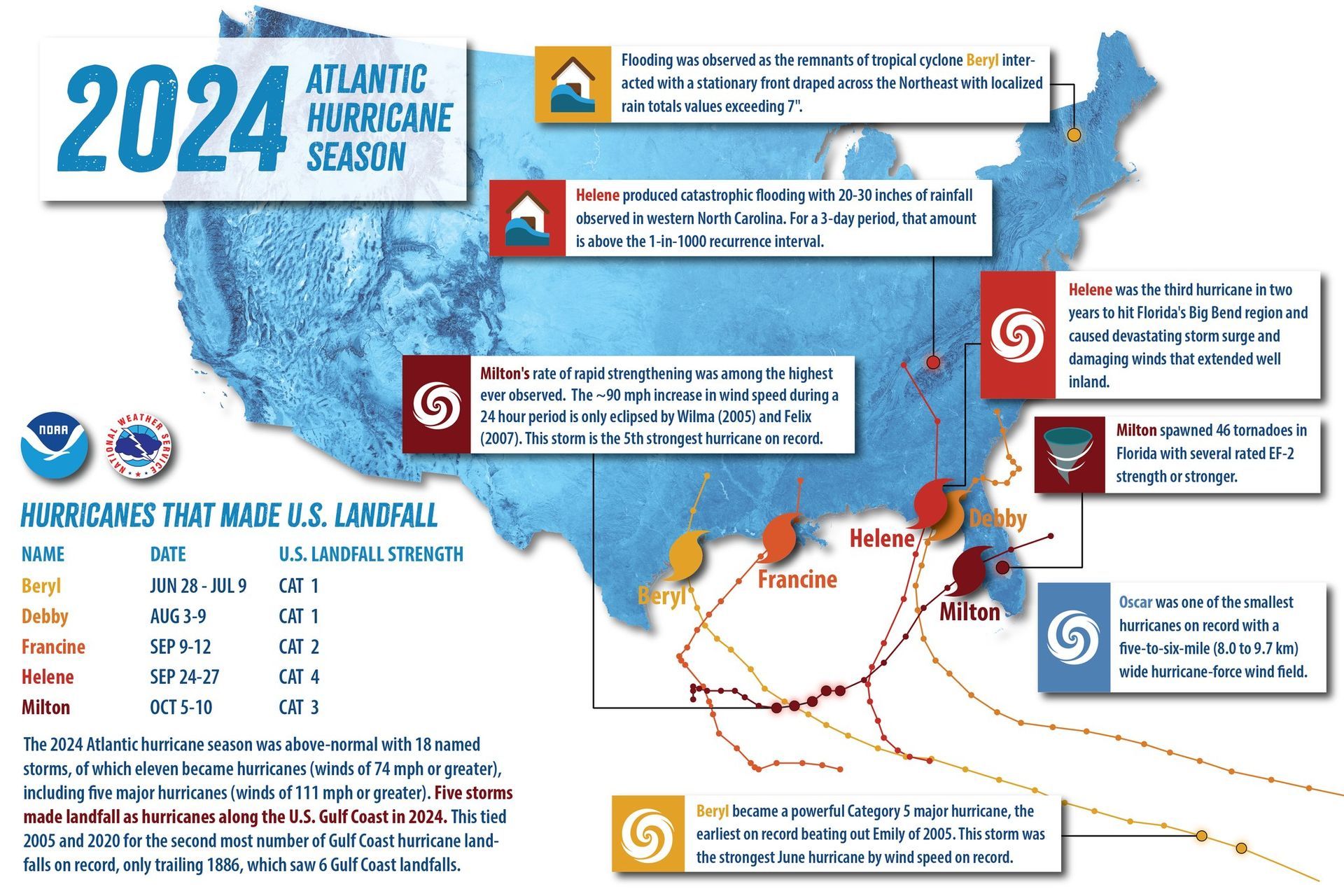
Share this article w/ Friends...
